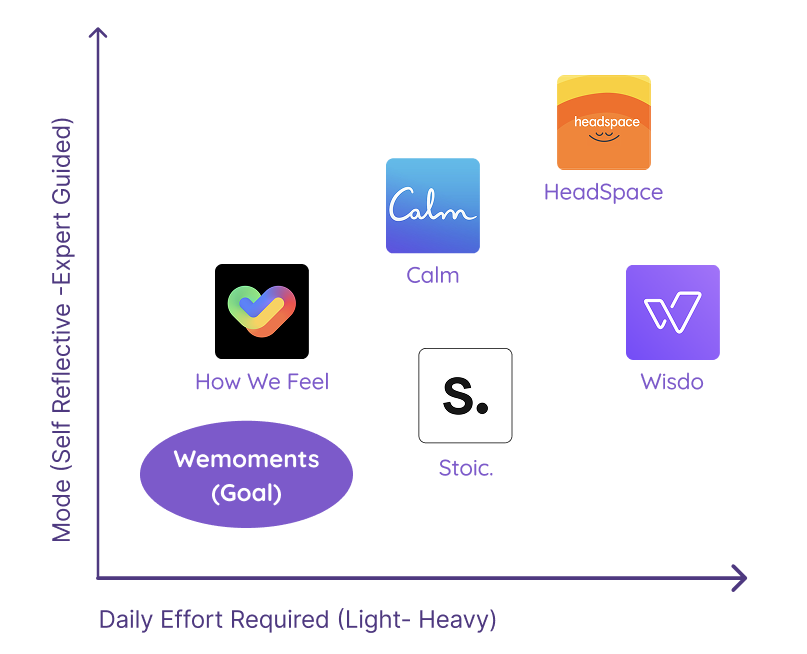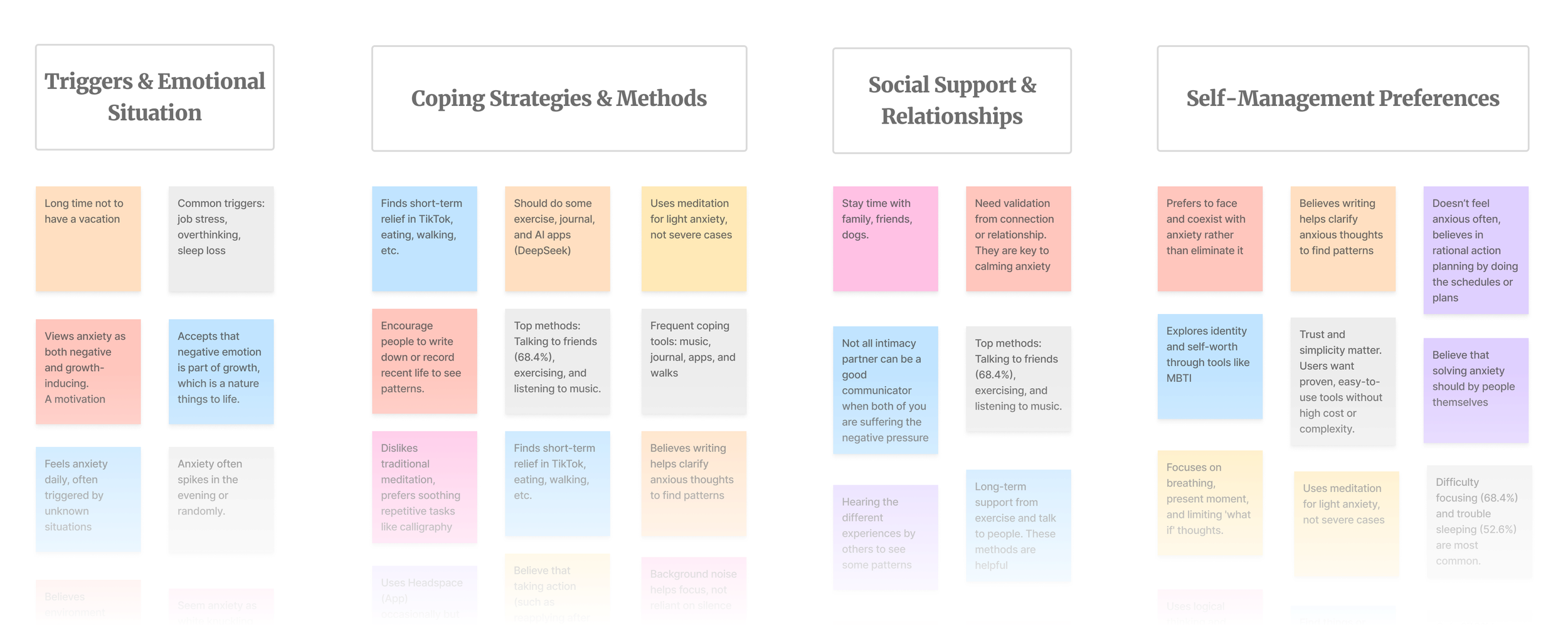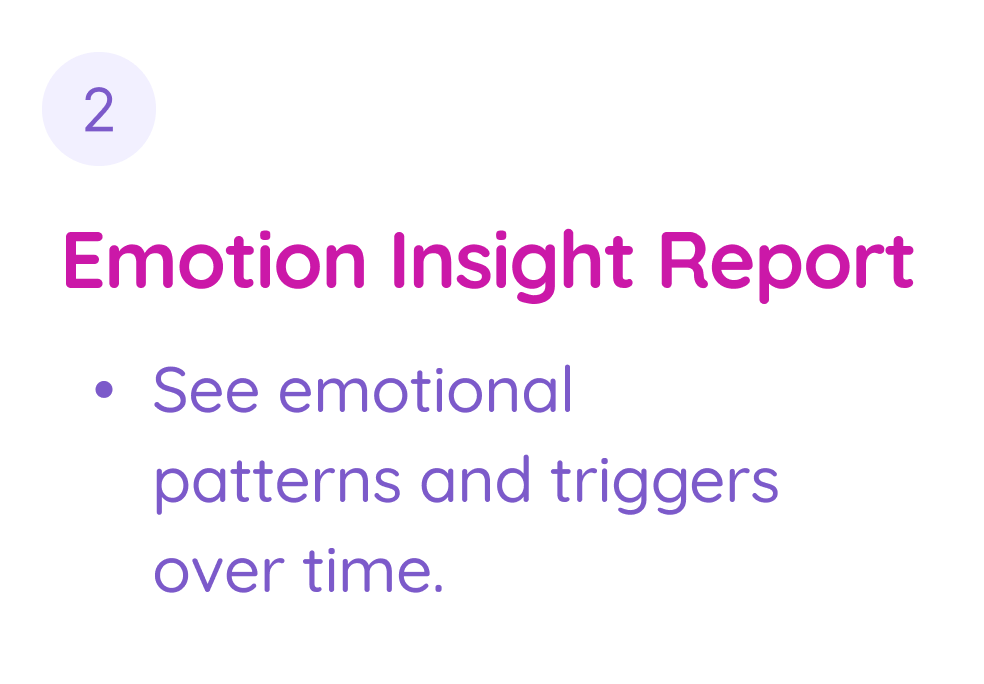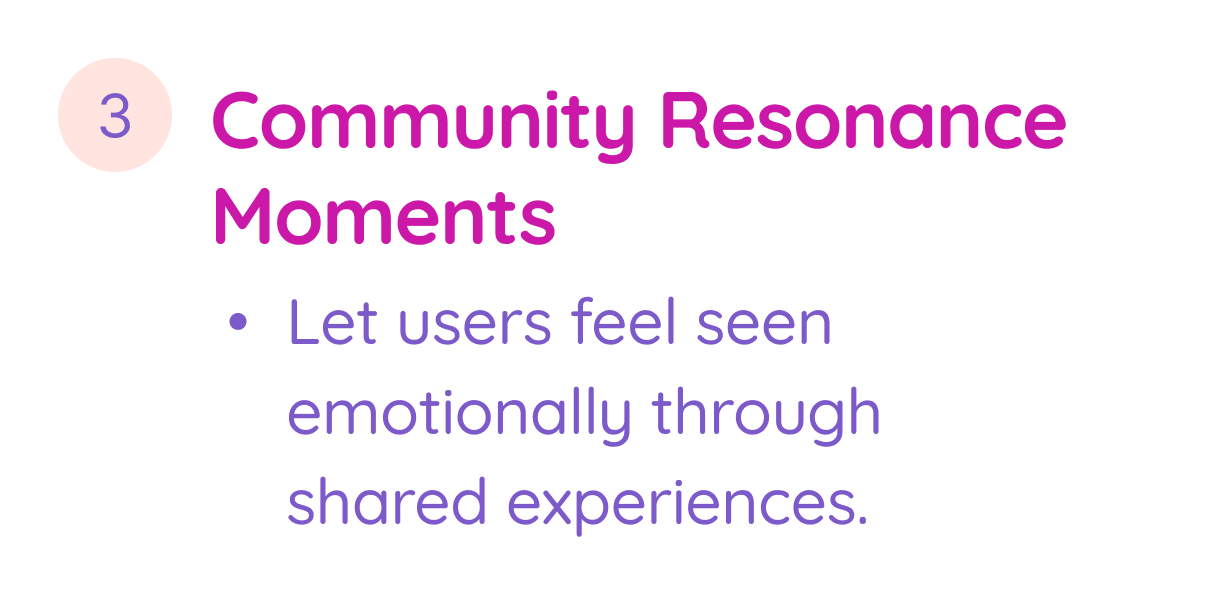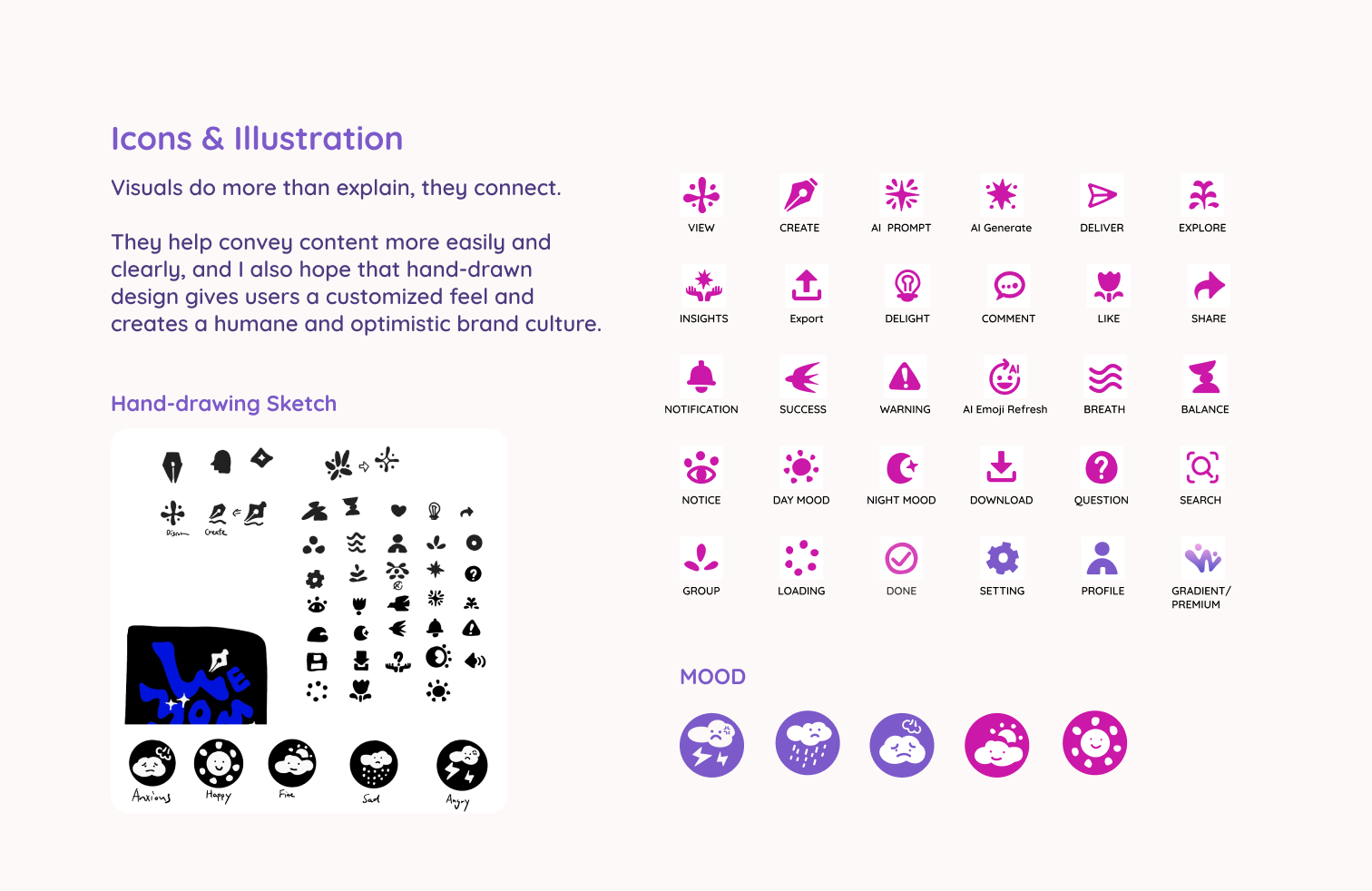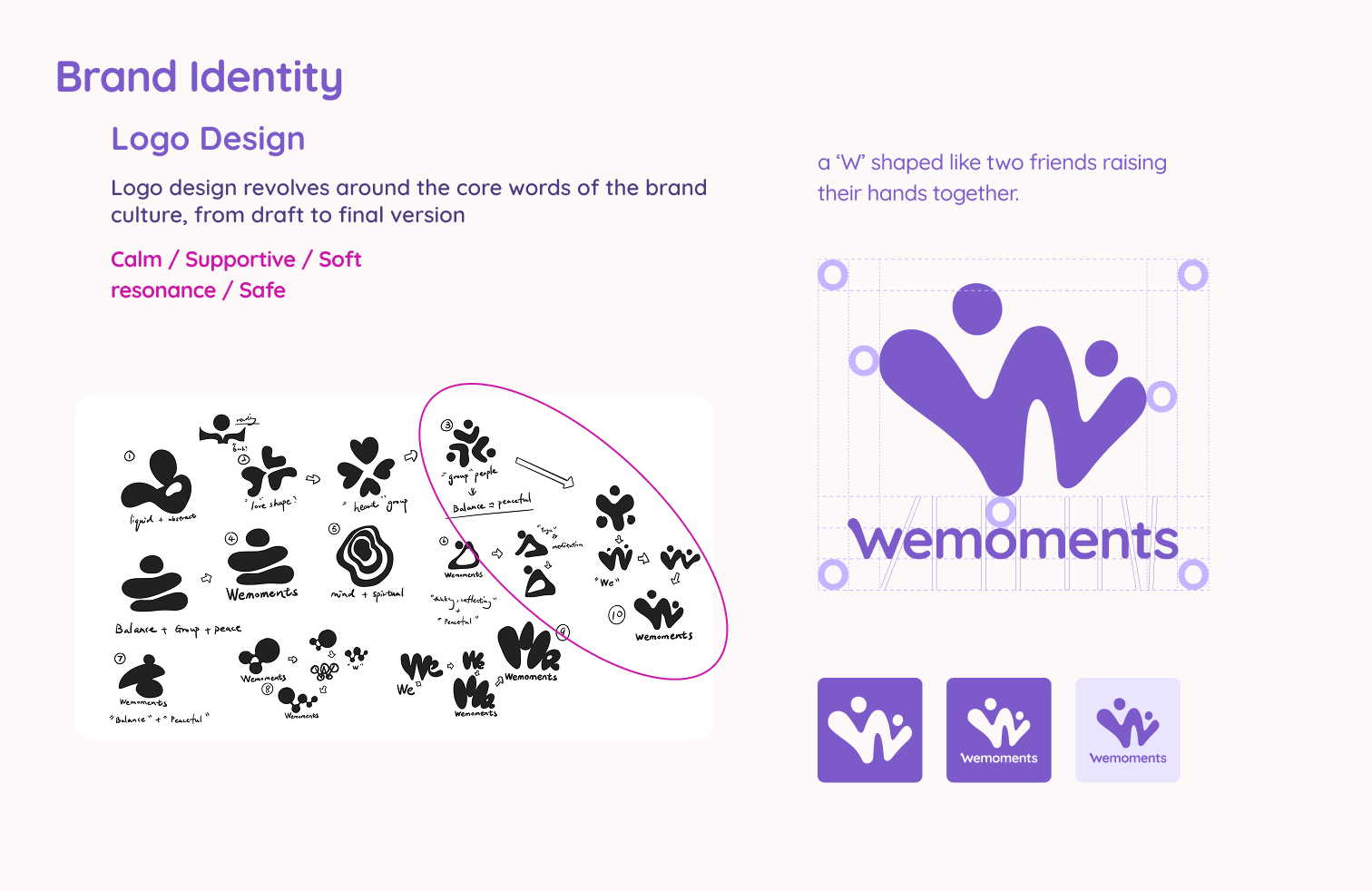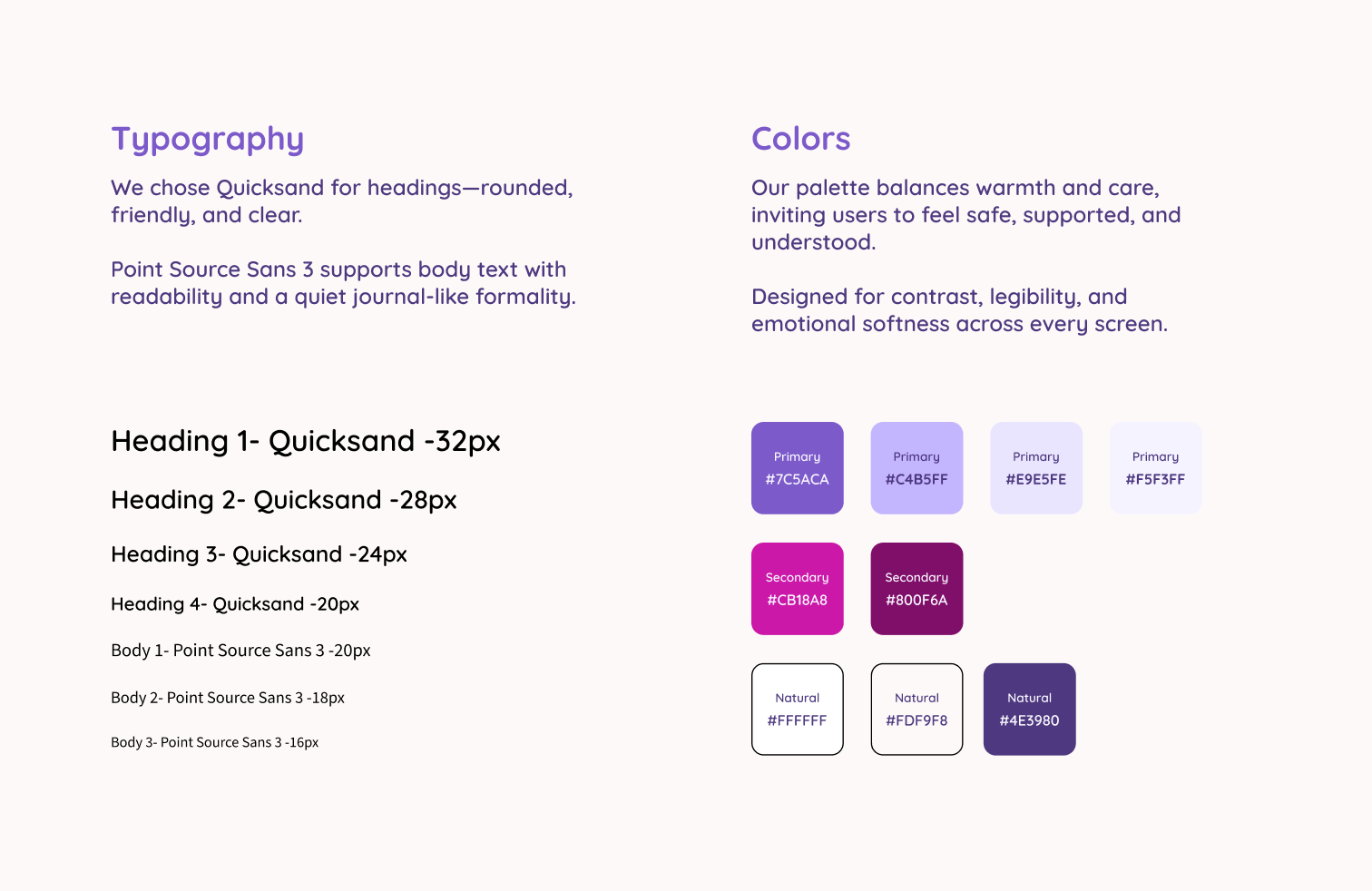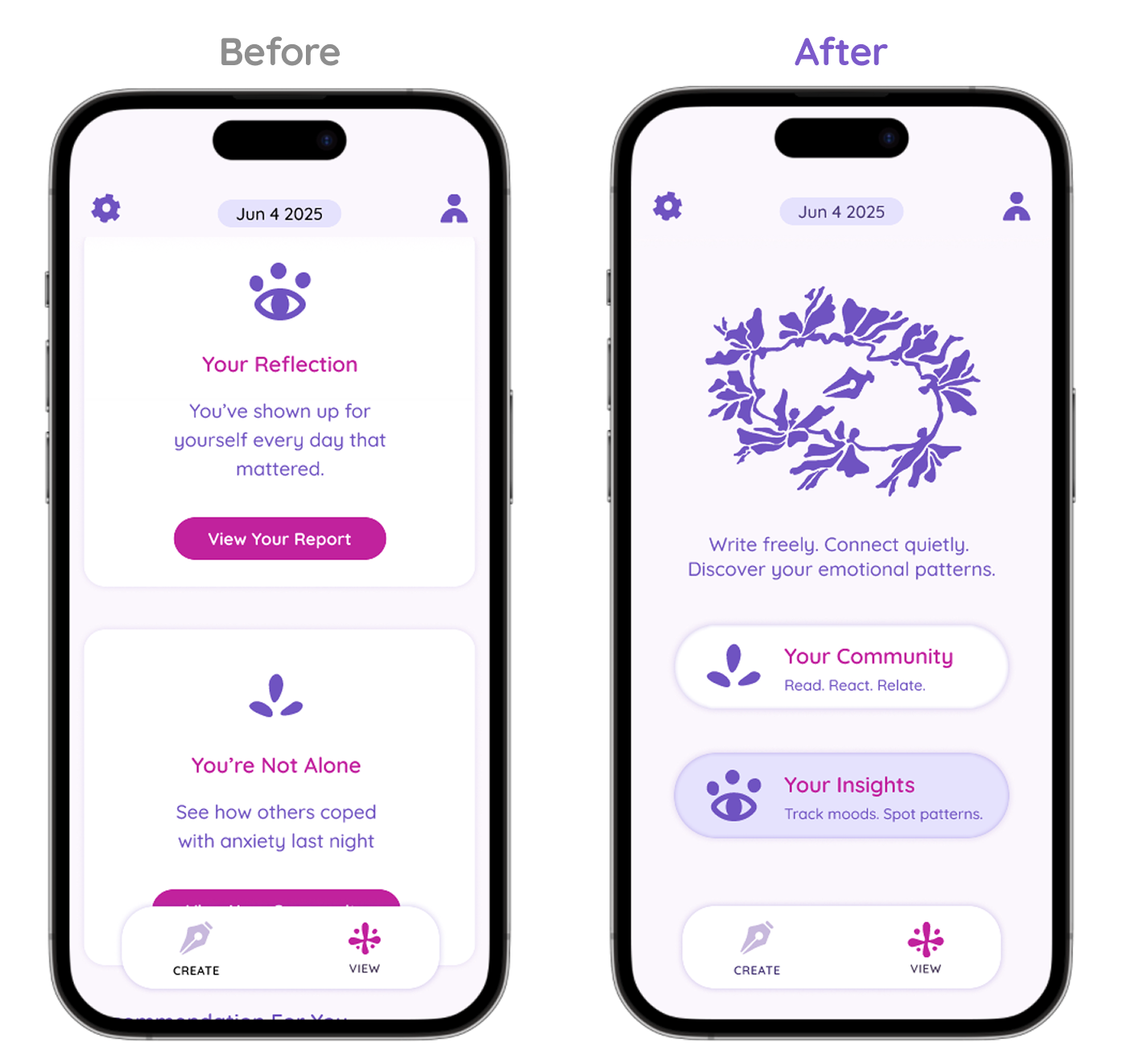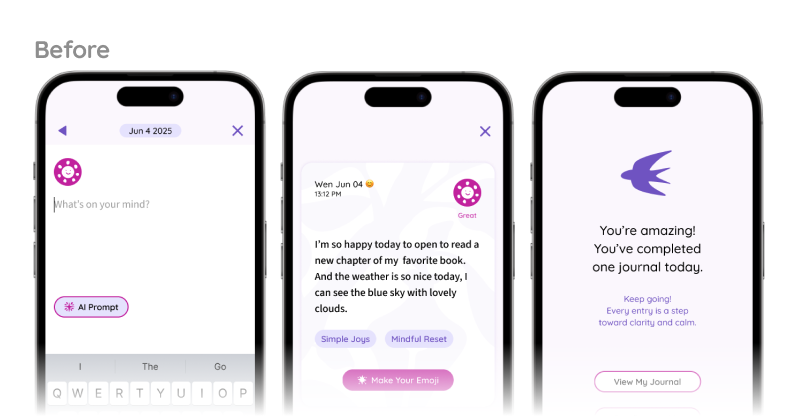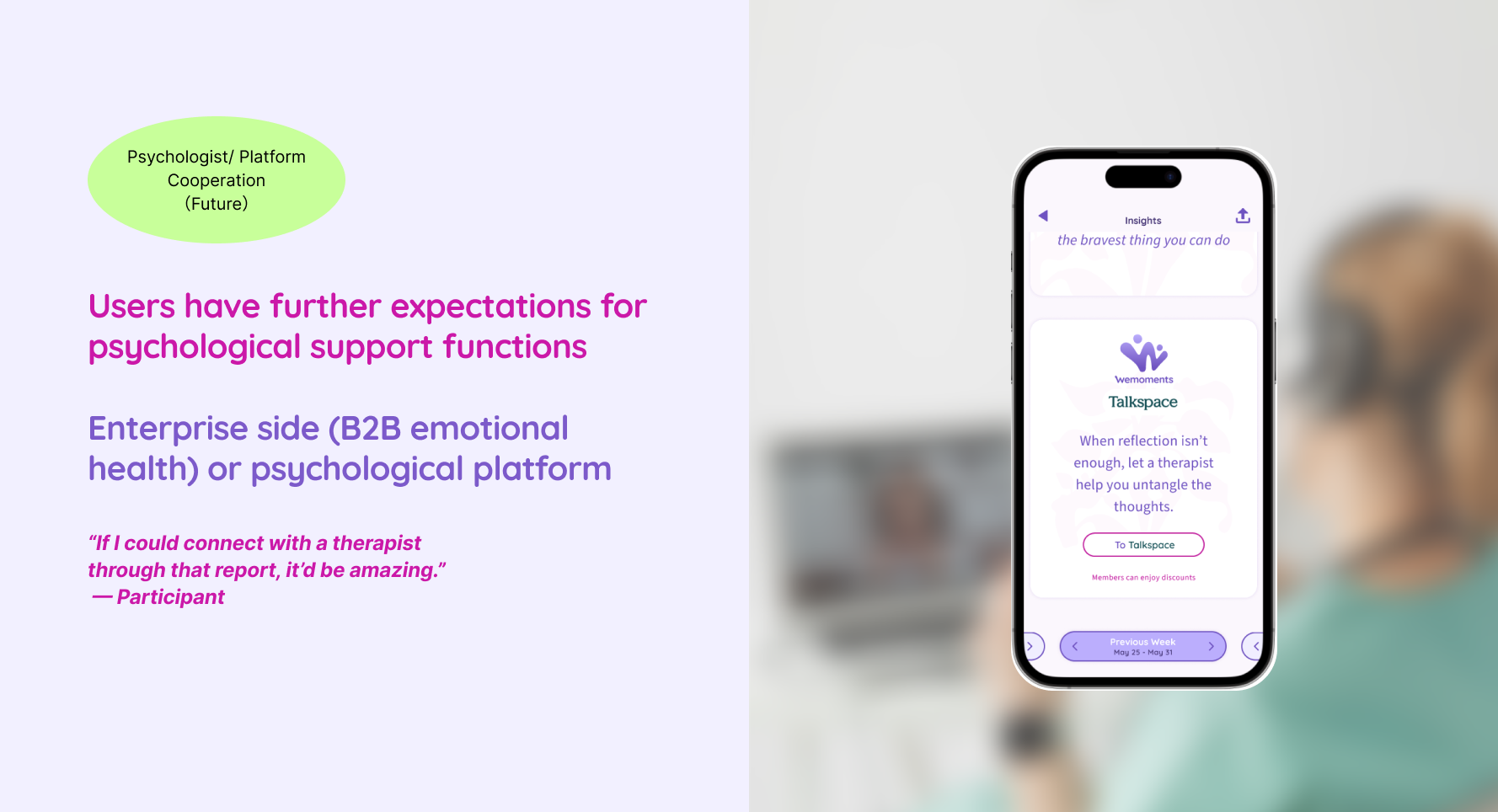Wemoments
- Emotional Wellness
Wemoments is a self-initiated emotional journaling app that helps young adults understand their feelings and see groups.
My Role
Product Designer, Brand Illustrator
Timeline
13 Weeks, 2025
Focus
Product Design, UX Research, Brand and Illustration Icons, Prototyping

Core Experiences
Brand Design

Design Journey
Why This Matters
From personal reflection, informal conversations with 25 individuals (aged 23–35), including 6 deep-interviews and 19 surveys, uncovered:
Young adults often feel emotionally overwhelmed, but avoid traditional mental health apps for being time-consuming, clinical, and hard to stick with.
This isn’t just personal experience. A 2024 report shows 43% of U.S. adults feel more anxious than last year.
But the real challenge isn’t knowing they’re anxious. It’s expressing it in a safe, low-effort way.
So…
How do people actually experience anxiety?
What do they feel, what they do and what really helps?
🔎 Research Goal
& Approach
The goal is to truly understand how people reflect on emotions in everyday life, I conducted in-depth research and interviews. Two research methods were used here:
(Age from 23-35)
Interviews - 6 People in person
Surveys - 19 Participants
During interviews, one perspective struck me deeply 🔑 that anxiety may not need to be fixed, but understood and lived with.
That idea reframed everything and became the foundation for this product:
📉 Competitor analysis
Before generating concepts, I analyzed how leading tools support emotional wellness.
Most mental health apps focus on structured therapy or guided practice.
Wemoments takes a softer path:
Small Steps
Gentle Reflection
Connection
Self-growth
💡 Emotional Insights
The research revealed that users turn to tools like meditation apps or therapy platforms, but they often feel heavy and hard to maintain. Instead, users want:
Quiet and simple
Emotionally safe ways to reflect
Feel understood
Allow me to introduce meet Lina and Jason, two voices that represent our primary user groups (ages 20–40) with mild stress or anxiety who seek self‑awareness but prefer flexible tools :)

How Might We…
help people reflect on emotions in a light and feel understood through shared experiences?
💪 From Insights to MVP
Through several rounds of ideation, I led a card sorting exercise with 3 participants. The results highlighted two key preferences:
Brief, low-effort journaling:
Users want a quick, lightweight way to surface emotions.
Design Implication: Reduce friction → emoji inputs, smart keyword extraction, instant submission.
Anonymous story browsing:
Users seek emotional resonance without the pressure of talking to others.
Design Implication: Build a safe, anonymous feed → filtered by emotion tags.
These insights directly shaped the app’s MVP focus. :)
Based on insights and prioritization, the MVP was defined around three tasks where users most need lightweight support.
Although early exploration included multiple branching paths, usability patterns showed users preferred simplicity + emotional clarity.
Two main pages contain three tasks (Free Model Trier).
Journal Page
Community
PageInsight Page
👌 Ideas For Mid-Fidelity
Task 1: Create your journal
Task 2: Interact with Community
Task 3: View Insights
🌟 Visual Language
Logo/Icon/Illustration
Brand language and visual storytelling shape how users feel seen and build closeness.
2 Rounds of the Usability Test
The final product was set up with Round 1 (10 participants) and Round 2 (9 participants) of Usability Test.
🤼🏻 Iteration -
After Round 1 Usability Test
What worked in the Round 1 Usability Test?
Users found the emoji + keyword journaling light and enjoyable, appreciated clearer insights through the weekly reports, and felt emotionally safe engaging with anonymous community stories.
And, what should be improved?
What I did
Reframed IA → Create / Community / Insights
Strengthened hierarchy and section labeling
Added a welcoming headline to clarify value instantly
Challenge1
Users confused Report and Community; homepage didn’t communicate purpose.
What I did
Enlarged “Start Journal” card
Added a clearer CTA button to improve visibility.
Challenge 2
Users often missed the entry point for journaling.
Challenge 3
Users misclicked on reactions and couldn’t find key actions.
What I did
Resized emojis
Improved button grouping.
Challenge 4
Users didn’t know when journaling started or ended.
What I did
Added step indicator + confirmation screen to give structure and closure.
Hi-Fi Prototype

🎉 Outcome
After two testing rounds,
✅ Task completion rose from 50% to 100%
✅ 0% Drop-off rate from 50%
✅ Engagement score, 6.2 → 9.2/10
🎯 What Users Valued Most
92% said the journaling flow was clear and intuitive
“The flow was intuitive and simple.” -Participant
75% felt less alone through community stories
“The idea of sharing journals intrigued me - it helps my mental health.” -Participant
Users felt safe engaging without pressure or judgment.
“It’s anonymous and real. I felt free to interact.” - Participant
83% loved seeing emotions as emojis & keywords
“I loved how my emotions turned into emojis and helpful keywords.” - Participant
Future Insights
Next step may include:
Long-term, Wemoments could partner with platforms like Talkspace or Headspace to offer tiered support - from light journaling to professional help.
🧠 Reflection
Every design decision, big or small, was a chance to make someone feel seen.
This project reminded me that good design is in the small things. I’m excited to keep building Wemoments, adding more care and more ways for people to feel connected as my future goal.










